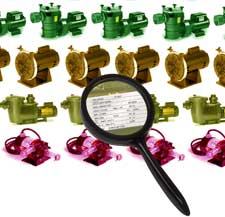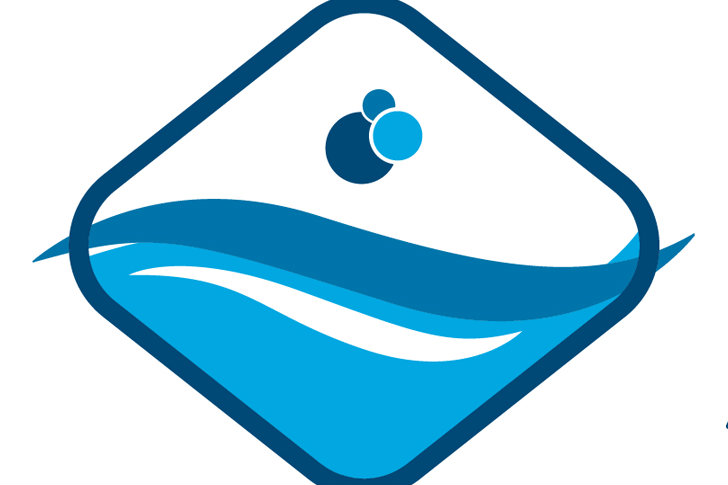When was the last time you pulled a pump out of the box and looked at the motor label? It was probably your first week of training, right? You dared not ask what symbols such as “AMPS” or “SF” meant.
Perhaps it’s not entirely your fault. Many service technicians and builders say that the labels historically haven’t always given installers the figures they need to properly size a pump.
“That’s a real shortcoming because when you build a system and need a certain flow rate, you don’t know how many gallons per minute a pump can produce unless you go to the manufacturer’s pump curves,” says Dan Johnson, owner of Swim-In Inc., a pool-building firm in Sarasota, Fla. “Some of those pump curves are not published in the manufacturer’s literature.”
That’s about to change. Title 20 of California’s Appliance Efficiency Regulations requires pool pump manufacturers to include the product’s total horsepower — often called “service factor horsepower” or “brake horsepower” — on their motor labels. (For more on the difference in pump performance and a look at a pump label, click here.)
The new law also might be adopted into ANSI/APSP 10, the designation for the industry’s voluntary pump standard.
The intention of the standard is to promote energy efficiency by giving consumers and pump installers more precise information about the product’s performance capabilities. It would also help clear up confusion as to why pumps of similar horsepower ratings might exhibit varying degrees of output.
Power struggle
Under the new Title 20 regulations, manufacturers are required to publish pump performance curves as part of a data dump to the California Energy Commission. This recent push toward informing the public is meant to demystify one of the most misunderstood aspects of pool pumps.
“For the most part, what California is trying to achieve is helping people understand what horsepower is,” says Rob Stiles, product manager, pumps, at Pentair Water Pool and Spa in Sanford, N.C. “What does it mean?”
Total horsepower, according to the CEC standard, is the value of the motor’s service factor times its nameplate (rated) horsepower. Service factor usually is indicated by the “SF” on the label and refers to the motor’s reserve. Nameplate horsepower is designated by an “HP” and is based on the motor’s rpms. Thus, the service factor horsepower tells you how much you can rev the motor up without overloading it.
For safety reasons, manufacturers commonly use a slightly larger motor than what the pump requires, says Gary Fernstrom, a senior project manager at Pacific Gas & Electric Co. in San Francisco. PG&E is the major utility behind the Title 20 regulations. Fernstrom points out that engineers usually will specify an alternating current motor that is 10 percent to 15 percent larger than the load required to run the pump. For example, a motor with 10 percent reserve will have a service factor of 1.10; with 65 percent reserve, the motor’s service factor would read 1.65.
But pool builders and service techs often get confused when trying to familiarize themselves with uprated and full-rated motors. An uprated [or maximum-rated] motor has a higher nameplate horsepower and a lower service factor. On the other hand, a full-rated motor has a lower nameplate horsepower with a higher service factor.
For example, a motor with 1.0hp and a service factor of 1.5 is capable of the same output as a 1.5hp pump with a service factor of 1.0. That said, it can be puzzling for installers when their 1.0hp pumps by one manufacturer generate the same amount of water flow as a 1.5hp by another.
It’s a problem almost as old as the pool business. As far back as the 1960s, the industry has used horsepower as a marketing tool for pumps, but not always appropriately, according to Johnson, who teaches seminars on the topic. In an era when Americans were under the impression that “bigger was always better,” horsepower was a term the average consumer understood.
Thus, every builder was trying to one-up the competition by offering the pool owner larger pumps, whether they needed it or not. The only setback was that they weren’t always upsizing the filters with the pumps, which led to a lot of early mechanical breakdowns.
“Builders just did things the way they learned how to do them,” Johnson says. When equipment manufacturers started receiving too many warranty calls, they began lowering the service factors on their motors. That way, builders still could sell motors to consumers with higher nameplate horsepower.
Fast forward a few decades to an era where “efficiency” is the new buzzword. Today, it’s much more common to see motors with lower rated horsepower and higher service factors. “For a number of reasons, the pool industry has service factors that go as high as 2.1,” says PG&E’s Fernstrom. “Now why would you do that? Well, a manufacturer can then say their 1hp pump generates more water than anyone else’s on the market and claim it’s more efficient. In reality, it’s not more efficient because it’s draining more energy.
“I can’t tell you how many people have told me, ‘I’ve downsized from a 11/2hp to a 3/4hp pump, and I get the same water movement out of it.’ Well, it’s because you put in a higher service factor and didn’t downsize at all,” Fernstrom says.
The basic rule is, the more reserve horsepower being used, the more flow is created and the more energy is drawn. Yet pool pump manufacturers say there are other reasons — such as utility — for the wide variety of service factors found on motors.
Custom jobs
Some pumps are designed for different functions as a result of the way head influences flow rate. Head is a measure of pressure on a system. It’s affected by a number of factors, such as plumbing size, filters, drain covers and much more. As the head increases, the pump’s flow rate, measured in gallons per minute, decreases.
Certain applications might require special features. For instance, a low-head pump, often used for waterfalls, is ideal for a job that requires a high amount of flow.
With service factors, there also are regional demographics to consider. “Swimming pool pumps are purchased by builders in different markets,” says Steve Gutai, product manager of pumps, filters, valves and waterfeatures at Jandy in Petaluma, Calif. “Each of these markets sells pool equipment at different price points.
“Manufacturers are always striving to provide products that will fit these price points,” adds Gutai, who also is a member of the APSP Technical Council. “This results in the use of lower service factor motors on swimming pool pumps in certain regions of the United States and Canada.”
Others agree. “It’s true that some of our customers prefer to sell maximum-rated products to achieve certain price points,” says Mark Normyle, director of marketing at Hayward Pool Products, based in Elizabeth, N.J.
Going with the flow
On the surface, the new labeling requirement is a first step toward leveling the playing field between pumps of varying service factors. It also might help settle some of the misunderstandings about pump performance moving forward.
“I think it’s nice to have a common reporting structure, so everyone is on the same page and [publishing] the same information,” says Gary Ortiz, technology manager, pool products, at Hayward. “For years, the industy has done maximum-rated and full-rated horsepower pumps. Basically, they’re saying, ‘Let’s go beyond that and tell them what they’ve got in terms of horsepower.’”
Many manufacturers, builders and service techs already are seeing the long-term advantages. “[California’s new requirements] are going to benefit the industry in many ways,” Jandy’s Gutai says. “First, builders are being driven to design pool systems that are more efficient and require less electrical consumption. Second, because of the required labeling changes, builders, service techs and homeowners will be able to compare apples to apples when buying swimming pool pumps and motors.
“The third benefit is perhaps the most important,” he adds. “We’re establishing pump and motor compatibility that will make systems work together properly and optimize the design of the swimming pool’s construction.”
In fact, a 2008 requirement for an energy factor rating, which is currently in the works, will take information on the labels even further. Commonly referred to as “wire-to-water efficiency,” the energy factor rating is a calculation of the amount of gallons being moved for each watt of energy drawn by the pump — that is, gallons per watts per hour. Before the 2008 regulation is written, many manufacturers are working with energy groups to ensure that the calculation takes into consideration other important factors that might affect wire-to-water efficiency.
“There’s a little bit of debate right now between how the California Energy Commission is looking at wire-to-water efficiency vs. the way the industry would like to look at the issue,” says Ortiz, who operates from Hayward’s plant in Clemmons, N.C. “Some of the debate is revolving around what a typical pool is today, and how things such as plumbing size affect a pump’s efficiency.
“We understand how pools were built years ago, but we’d like to show them what they look like going forward,” he adds. “We’d also like to make sure we include things such as head vs. flow in the calculation.”
In other words, many manufacturers believe the energy rating would need to take into account how much head pressure the pump is producing.
“As it stands, the energy factor rating PG&E is proposing makes two-speed and low-head pumps look like a better buy over ones that create a full range of head pressure,” Pentair’s Stiles says. “We are trying to come up with a calculation that will take into effect head pressure, flow and how many watts of power the pump uses as a result.
“Otherwise,” he adds, “everybody would just run out and buy low-head pumps [such as those designed for waterfalls], put them on pools and no water would come out.”
Most industry professionals seem to welcome the possibility of an energy factor rating. “Now you’re cooking,” Johnson of Swim-In says. “By labeling the pumps in that fashion, it will finally lend clarity to the technician and consumer as to what you’re actually getting for your money.”



